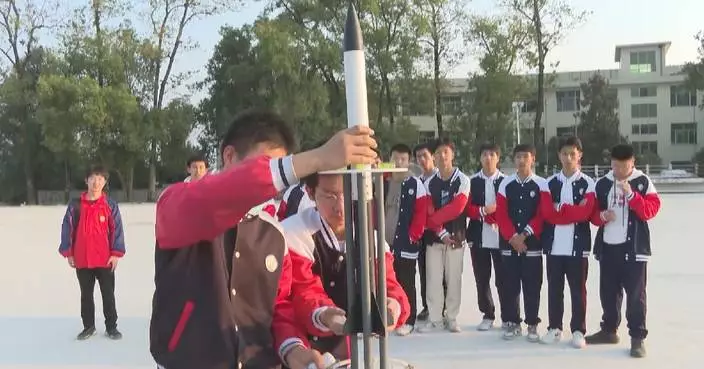Research on space environment simulation has helped to boost the progress in China's space expedition efforts.
In northeast China's Heilongjiang Province, a set of space environment simulation equipment has recently been put into use at a laboratory of the Harbin Institute of Technology.
Among the equipment set, the lunar dust cabin can simulate the vacuum, low temperature, electron irradiation, charged dust and other environmental factors on lunar surface, shedding light on the real challenges faced by lunar exploration devices and personnel.
"We know that the lunar surface is a very extreme environment, of which the most distinctive feature is the charged lunar dust and its dynamic migration. The entire moon's sunny side is positively charged and the dark side is negatively charged. The charged dust would migrate under the action of this positive and negative electric field and thus would exert a great impact on our lunar exploration project. It can pollute key surfaces such as lenses, solar panel surfaces, and space suits. We first use the lunar dust cabin on the ground to establish a vacuum and low-temperature environment. At the same time, as the lunar dust is charged, we also carried out a dust sticking experiment on the space suit. That is, what effect does the adhesion of the charged lunar dust have on the wear of the space suit," said Li Lifang, director of the laboratory.
The laboratory can also simulate the Mars surface, featuring low pressure, large-span wind and dust, and even dust storm.
Comprehensive tests and experiments on a variety of complex space environments can also be conducted in the system-level integrated irradiation test chamber.
"This equipment is called a system-level integrated irradiation test chamber. We can also call it a small space station simulated on the ground. First of all, we have integrated environmental factors of six major categories. In addition, the size of the test chamber and the parameter range of the simulated environment are also relatively wide. In terms of particle radiation, we have two electron accelerators and one proton and heavy ion accelerator, which can simulate electron and proton irradiation with a wide energy spectrum. In this respect, our equipment is at the leading level internationally," said Chen Huazhi, a research associate at the Harbin Institute of Technology.

Space environment simulation empowers progress in China's space expedition









